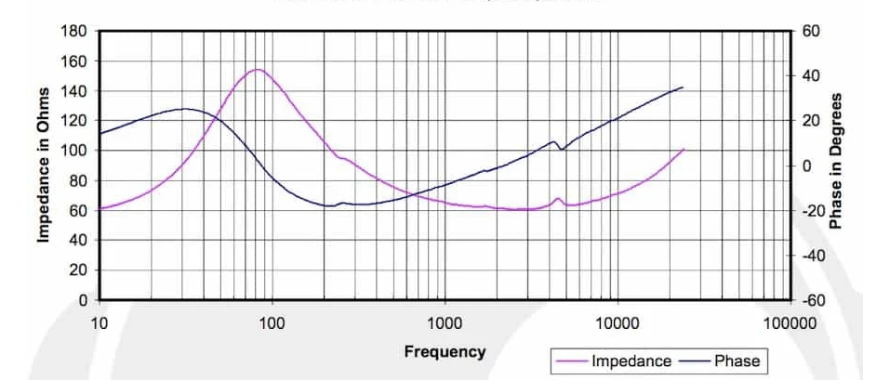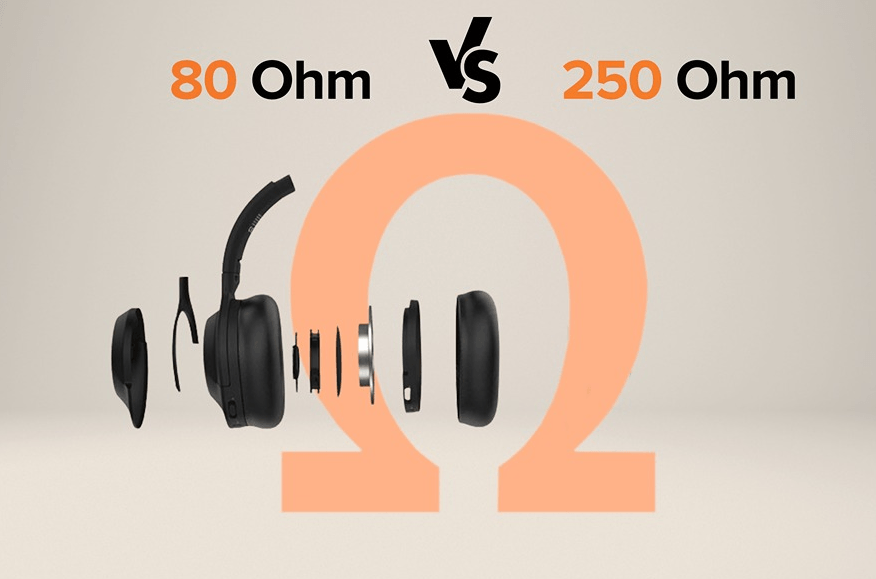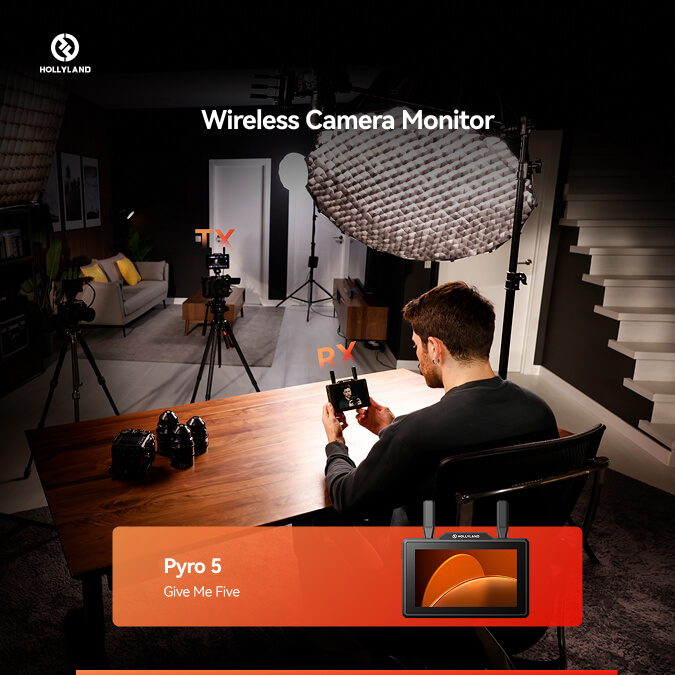Are you planning to buy a high-end headphone and looking for different modes and styles? Well, while looking for factors like premium headphone speakers, amplifier components, or noise cancellation features, you also need to take a glance at the impedance of headphones. Yes, you heard right!
You have undoubtedly noticed that in addition to the standard specifications (dB, type, etc.), they also have an Ohm rating, which indicates the impedance. Generally, people get confused between the 80 ohm vs 250 ohm headphones.
So, to clear out your confusion, let’s examine the differences between 80 and 250-ohm headphones to determine which option is best for you.
What Exactly is the Impedance?
Firstly, let’s discuss the impedance before diving deep into the topic. The headphones’ resistance and response to an electrical current are known as their impedance. Less resistance corresponds with a low impedance or low ohms, and more resistance corresponds with a high ohm. It measures ohms (Ω), and you have surely seen the sign on many electronic gadgets. It means how much power your headphones need to drive effectively. The high numbers mean your device needs more electricity, and the low numbers mean less power.

Levels of impedance:
Low impedance: 16-32 ohm. Headphones in this range are suitable for use with laptops, phones, and other devices with weak built-in amplifiers.
High impedance: Greater than 100 ohms. Higher voltage and more power, typically from an external amplifier, are needed for high-impedance headphones.
Range of Gray: 32–100 Ohm. The sensitivity rating of headphones in this range will determine how much power they need. When a headphone’s sensitivity is high, more power is required.
How Does the Ohm Rating Affect Sound Quality?
Now you have a better understanding of Ohm. Let’s look at how it influences the sound quality.
The Ohm rating affects sound quality in several ways.
- Power handling
It does not directly affect the sound quality unless the amplifier is unable to supply the necessary power to drive the speaker adequately, as you are aware that higher ohm ratings require more power and lower ratings require less power.
- Amplifier compatibility
Certain speaker impedance ranges are ideal for certain amplifiers to operate with. If you use speakers whose ohm rating is much higher than the amplifier’s specified value, you may experience less-than-ideal performance, or in severe situations, the amplifier may even sustain damage.
- Damping factor
The damping factor is the amplifier’s capacity to regulate the movement of the speaker cone. A larger damping factor typically leads to more control over the speaker’s motion, which can contribute to tighter bass response and superior sound quality. When combined with impedance-rated amplifiers, speakers with greater impedances have larger damping factors.
- Crosstalk and Interference
Lower-impedance speakers require more current from the amplifier, which can cause higher crosstalk and interference between the amplifier’s channels, particularly in multi-channel systems. This can have an impact on stereo imaging and overall audio quality.
- Speaker Sensitivity
While not directly connected to impedance, speaker sensitivity (measured in decibels) affects sound quality. Speakers with higher sensitivity will generate louder sound levels with the same input power as speakers with lower sensitivity, independent of their impedance rating.
The points above clarify that somewhere, directly or indirectly, the Ohm rating affects the sound quality. Now you should know the difference between 80 ohm vs 250 ohm headphones.
Difference between 80 ohm vs 250 ohm headphones
In general, headphones with a lower impedance (such as 80 ohm) use less power to achieve high audio volumes, making them ideal for portable devices such as cellphones, laptops, and MP3 players. High-impedance headphones (such as 250 Ohm) require more power for maximum performance, making them ideal for professional audio equipment and specialist amplifiers.

To decide which one is better for you, understand the difference between 80 ohms and 250 ohms, We need to discuss each one in detail.
80 ohm headphones: The ideal all-rounder headphones
Headphones with 80 ohms provide ample coverage for most audio tasks, making them an excellent choice. However, if your primary aim is to produce and mix studio-quality music, they fall short.
Advantages of 80 Ohm headphones
- Compatibility with a Wide Range of Devices
The main advantage of 80 Ohm headphones is their wide compatibility with a variety of audio sources. Their low impedance allows them to function effectively with portable devices such as cellphones, tablets, and laptop computers without requiring extra amplification.
- Portability and Convenience
80 Ohm headphones are more lightweight and small, making them a good alternative for those who value portability and convenience. They are great for on-the-go listening and may be conveniently stored in a bag or purse.
- Require Low Power
Now you already know that 80 Ohm headphones use less power to achieve ideal audio levels. This means they can make good use of the limited power output of portable devices without losing sound quality.
Disadvantages or limitations of 80 ohm headphones
- Limited Audio Quality
While 80-ohm headphones are more suitable for portable devices, they may not provide the same audio quality as high-impedance headphones. Their reduced power needs may result in less dramatic and detailed sound reproduction.
- Less robust and long-lasting
In general, 80 Ohm headphones may be less durable and sturdy than high-impedance headphones. Their lightweight design may impair construction quality and long-term durability.
250 Ohm Headphones: Professionals Headphones
The 250-ohm headphones are not suitable for casual music lovers. These are more professional headphones with the best frequency response and speaker features. If you are a professional, then you must know about more of it.
Advantages of 250-ohm headphones
- Premium sound quality
By utilizing the 250-ohm headphones, you get the advantage of premium-quality sound. Higher impedance allows them to handle more power and deliver a detailed sound experience. This quality makes it the perfect headphone for professionals, audiophiles, and critical listeners.
- Improved Durability and Build Quality
The higher impedance headphones, like 250 ohm, are generally made of stronger material that lasts longer. Premium built-up features give it assurance for long-lasting performance. An ideal choice for professionals.
- Better Noise Cancellation Features
Compared with 80 ohms, a 250 ohm headphone provides better noise cancellation features. Due to the higher power requirements, 250-ohm headphones come with a more robust and closed-back design. All this premium built quality brings a more immersive sound experience.
Disadvantages of 250-ohm headphones
- Limited compatible options
The sad part of these premium-quality headphones is that they are not compatible with laptops, tablets, and smartphones. These devices frequently lack the power output needed to drive high-impedance headphones properly. As a result, users may notice lower audio volumes and worse sound quality.
- Amplification Requirements
You need a dedicated headphone amplifier or audio interface to enjoy the premium sound quality of 250-ohm headphones. These devices offer the extra power to drive high-impedance headphones, producing superior sound quality and performance.
- Bulkier and Heavier
You can’t enjoy these headphones while listening on the go. The 250-ohm headphones are mostly bulkier and heavier, which makes them less portable and more convenient to use. It could be a disadvantage for those who value mobility and convenience of usage.
The Last Words
After reading the above points, you are surely familiar with the connection between impedance and headphones. Both the headphone’s 80 ohm and 250-ohm ranges bring good sound quality. However, the higher impedance rate of 250-ohm headphones is mostly used for professional purposes; they require more power and are not portable. If you are a professional user of headphones, go with 250-ohm headphones, but if you are looking for more portable and convenient headphones, you must try 80-ohm headphones for an immersive sound experience.
When choosing headphones, impedance isn’t the only factor affecting sound clarity\u2014reliable communication within production teams can also impact audio consistency. A robust wireless intercom system ensures your entire team stays connected, keeping audio levels optimal during events, concerts, or professional broadcasts.
FAQs
Q1: How do I choose the right impedance for my headphones?
By taking into consideration your audio source and listening habits, you can easily choose the right impedance for your headphones.
Q2: Are 80 ohms headphones more suitable for bass-heavy music?
Yes, if you want a more energetic sound, then you must go for 80 ohms headphones.
Q3: Which type of headphones should I choose if I have a high-power amplifier?
You can go for 250 ohms headphones if you have a high-power amplifier, as these can handle more power.

































.png)



